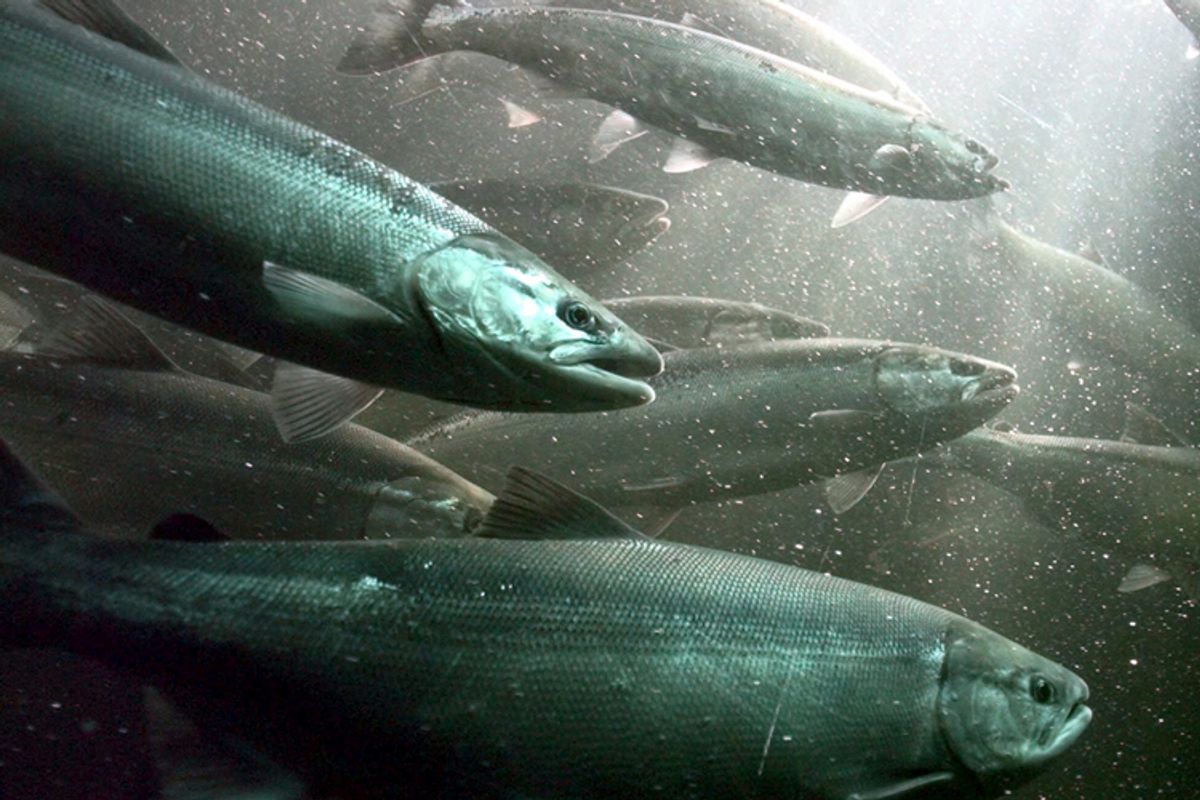 A large-scale mine in Alaska’s Bristol Bay, home to nearly half the world’s sockeye salmon and dozens of Native American tribes, would ravage pristine streams and wetlands, according to a final peer-reviewed report released yesterday by the Environmental Protection Agency. The assessment is yet another setback for companies planning to exploit the region's resources.
A large-scale mine in Alaska’s Bristol Bay, home to nearly half the world’s sockeye salmon and dozens of Native American tribes, would ravage pristine streams and wetlands, according to a final peer-reviewed report released yesterday by the Environmental Protection Agency. The assessment is yet another setback for companies planning to exploit the region's resources.
Tribes that have fished in the area for millennia asked the EPA three years ago to protect the bay from Pebble Mine, an open-pit copper mine planned by Canada's Northern Dynasty company. If permitted and completed, the mine could span as many as 186 square miles (equal to about 90,000 football fields) and become the largest of its kind in the world. In response, the agency studied the area's resources, finding that a mine the size of Pebble could destroy up to 94 miles of streams and 5,350 acres of wetlands, ponds, and lakes in Bristol Bay.
“Large-scale mining poses risks to salmon and the tribal communities,” said EPA regional director Dennis McLerran in a statement announcing the finalized report. “This is one of the last great places and supports some of the last remaining subsistence cultures in the world. Both the scale of the deposit and the nature of the mining that could take place in this region—and the importance of the native communities there—have driven us to make this assessment.”
Joel Reynolds, western director and senior attorney for NRDC (which publishesOnEarth), believes that the EPA’s report should lay to rest any doubts regarding the environmental hazards posed by Pebble Mine. "Even if it were planned and constructed with cutting edge technology, it would still destroy the region,” he says.
So is it time for salmon fishermen to break out the champagne? Not quite yet. Environmentalists and the region’s native communities argue that in addition to this report, the EPA should use its authority under the Clean Water Act or the National Environmental Policy Act to prevent mining projects from moving forward. “It’s time for the EPA to take immediate steps to protect the fishery, the Alaska native communities who rely on it as their primary source of food, and the 14,000 jobs that depend on it,” says Luki Akelkok, a local sport-fishing lodge owner and Chairman of Nunamta Aulukestai, an association of 10 Bristol Bay native tribes and native village corporations.
Without such enforcement, Northern Dynasty seems determined to mine this pristine part of Alaska. The company suffered a big loss earlier this year when its business partner Anglo American pulled out of the project (see “Digging Out”), deciding instead to focus on projects with the highest value and lowest risks. And Rio Tinto, another investor, announced in December that it may also cut ties to the project. After losing partners and reading the EPA's scathing report, you'd think Northern Dynasty would be ready to throw in the towel, but CEO Ronald Thiessen sayshis company still plans to submit a Pebble Mine proposal to the Army Corps of Engineers.
Meanwhile, the EPA has yet to decide what actions to take next. And according to Reynolds, it should back up its report with some action. "The EPA has to fulfill its responsibilities to protect the region and its people," he says. Stopping Pebble Mine before a Northern Dynasty backhoe can even lift a bucket of Alaskan earth would be a good start.



Shares